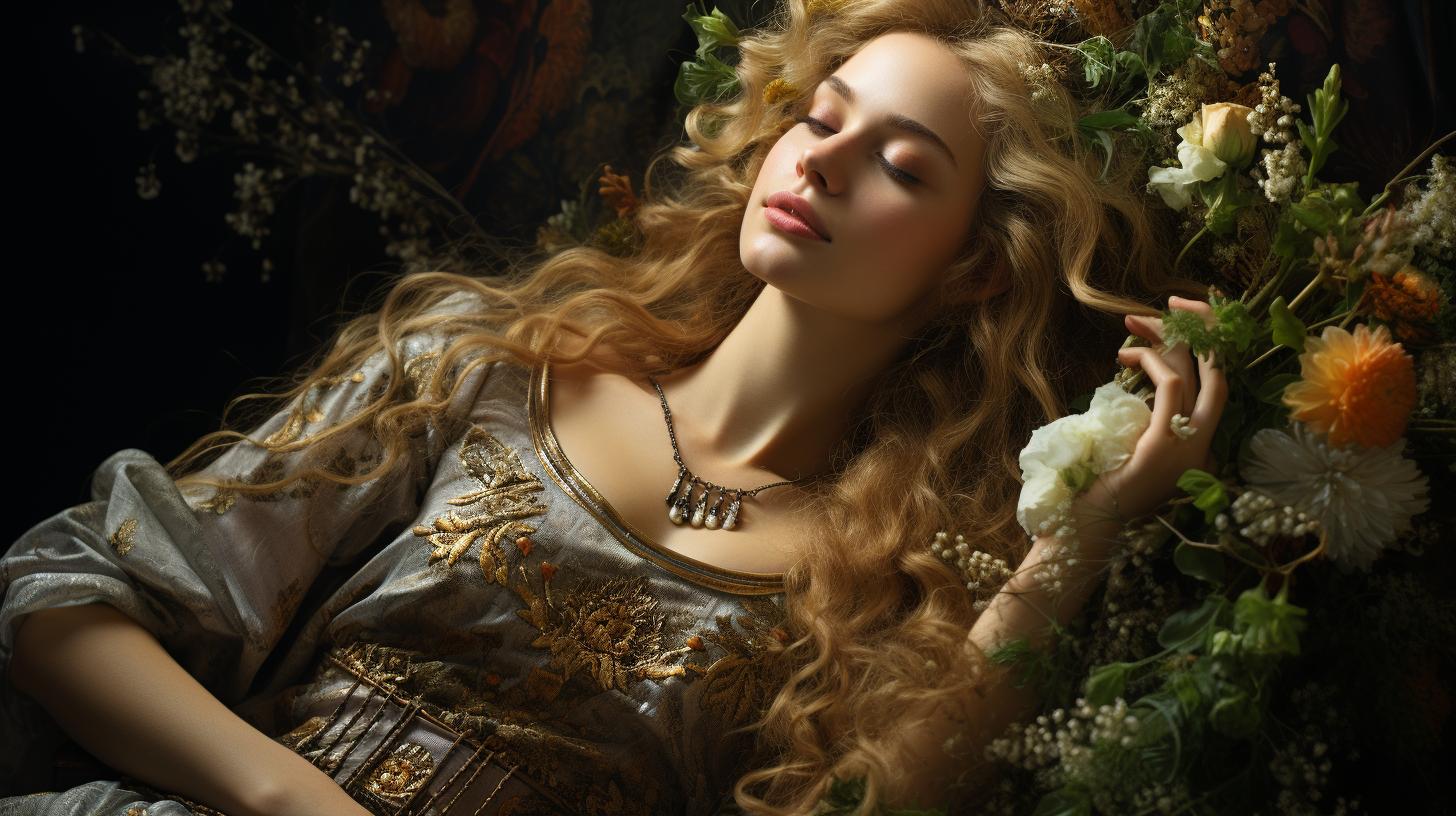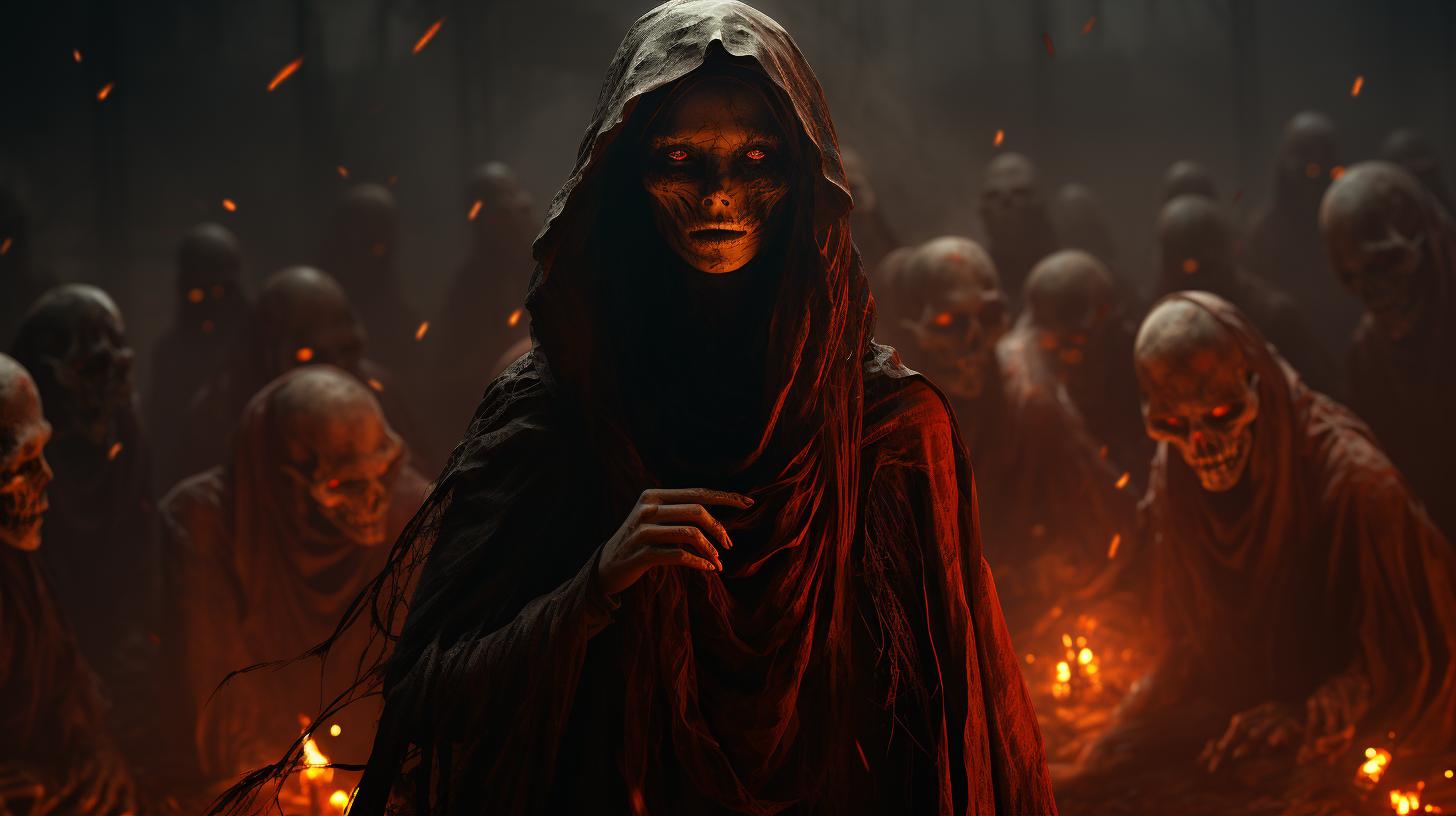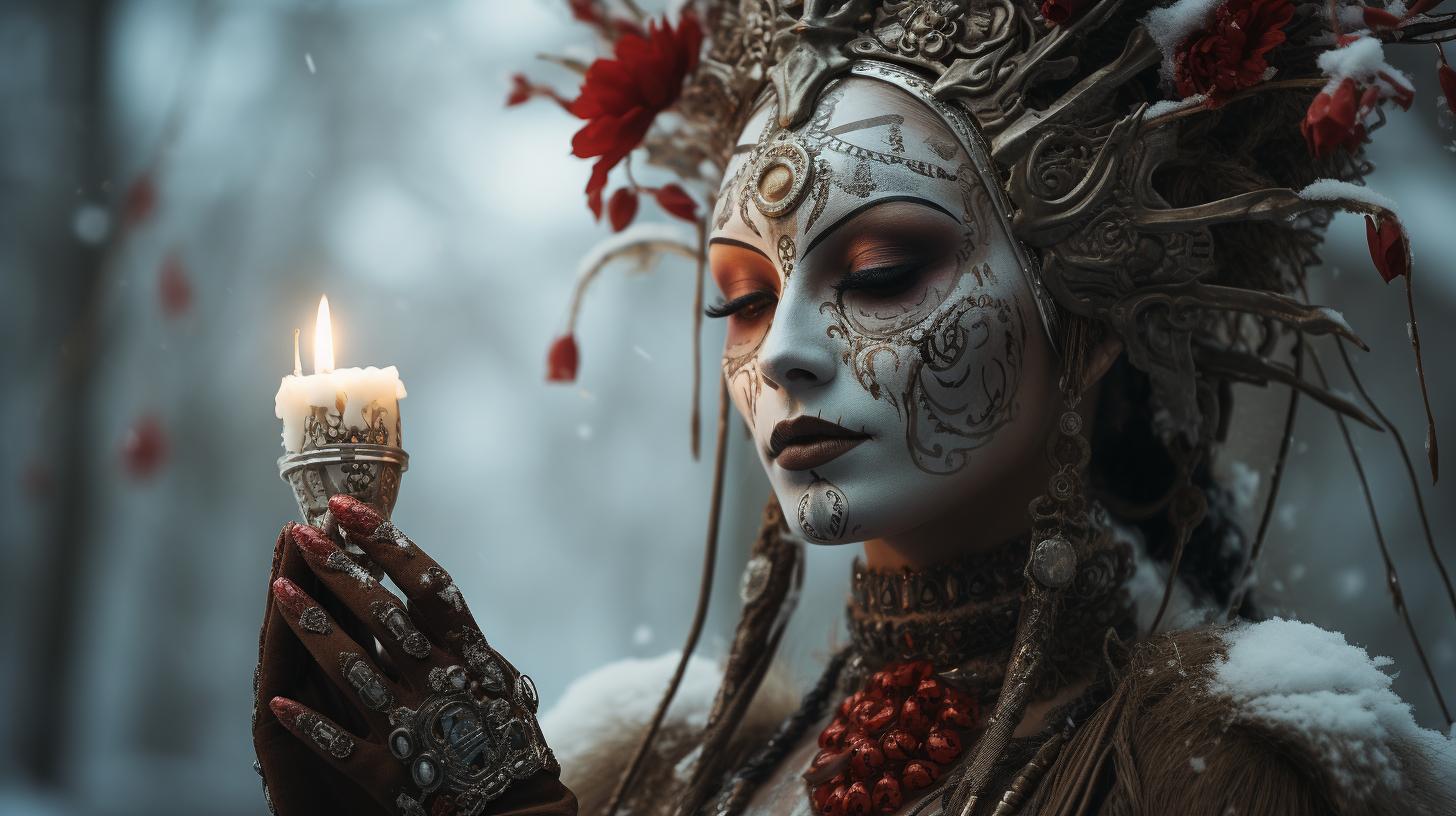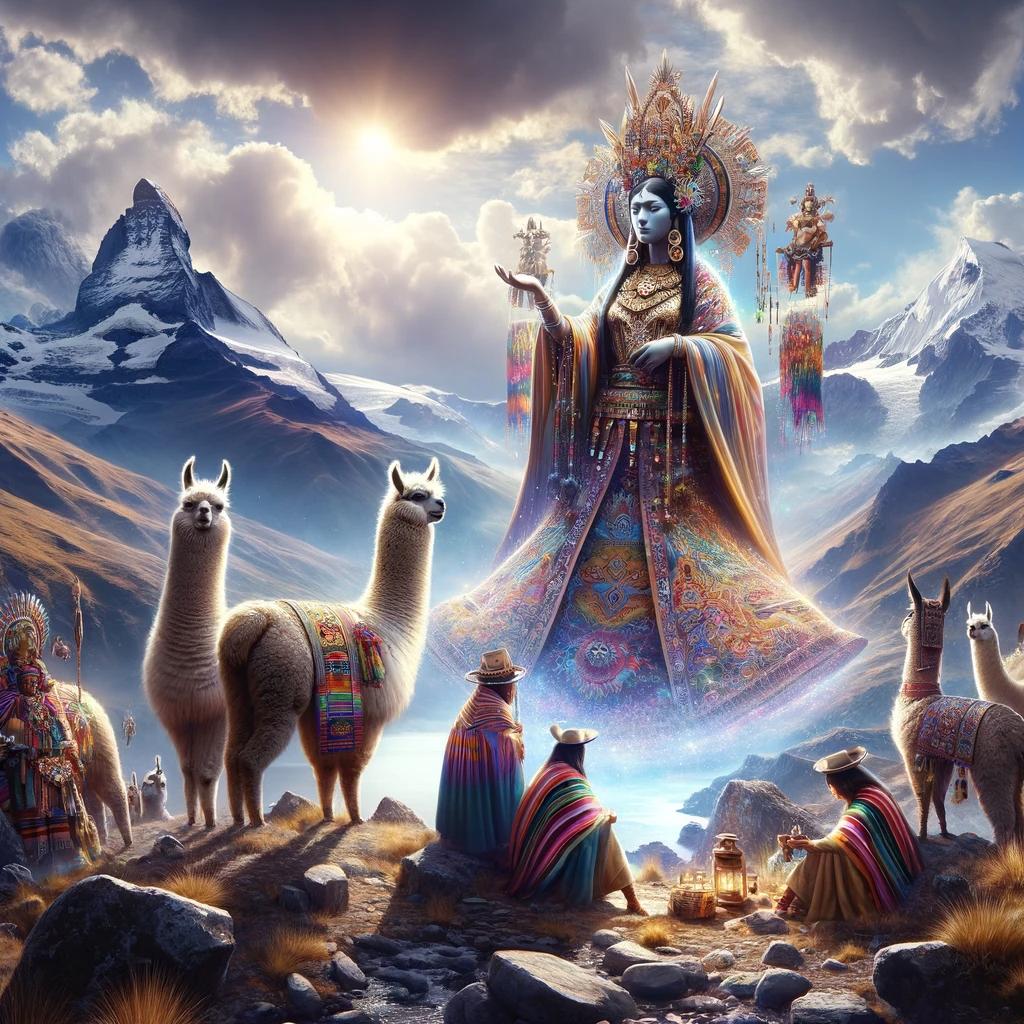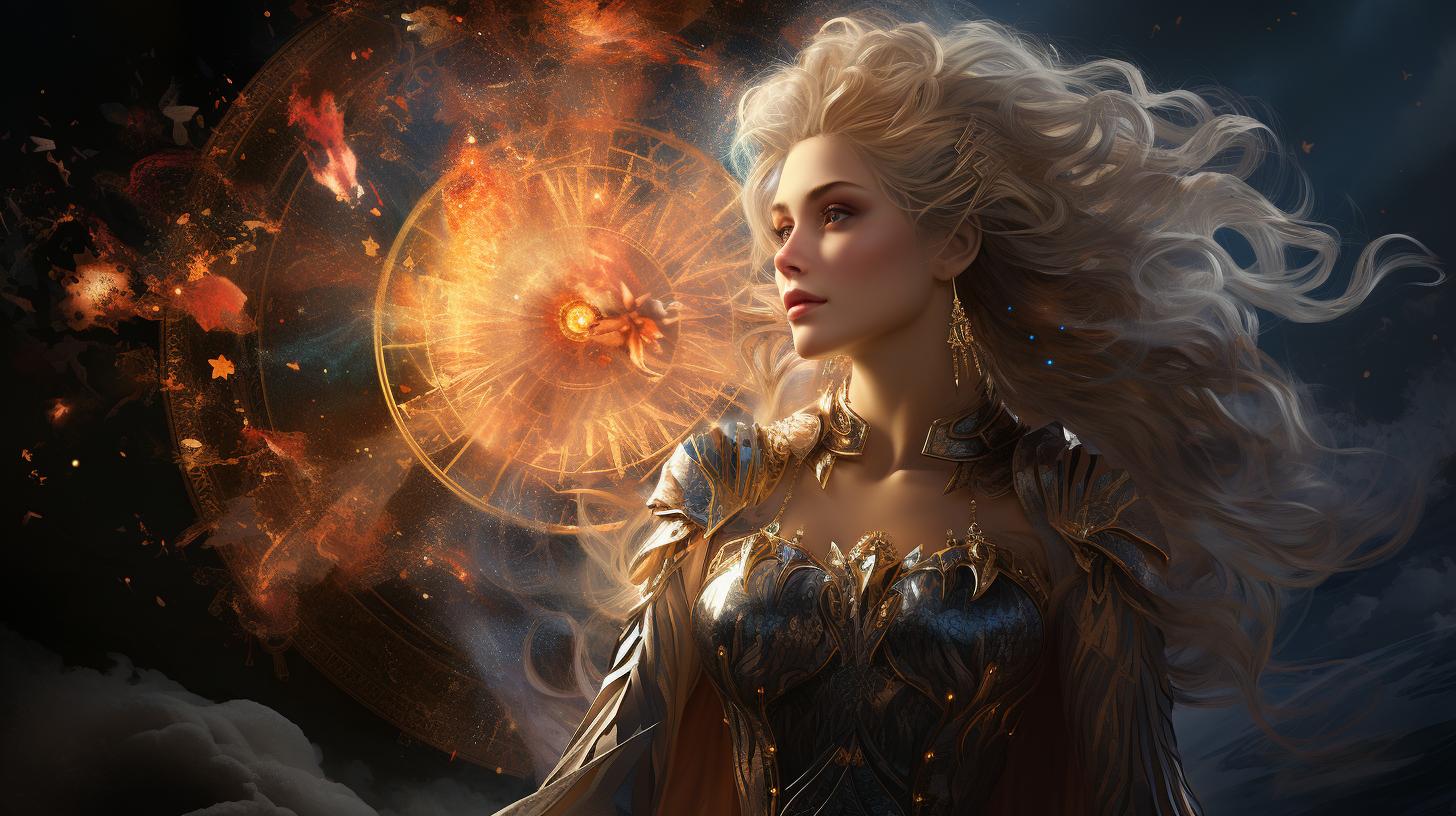Unveiling the Mysteries of Rozhanitsy: The Slavic Deities of Fate
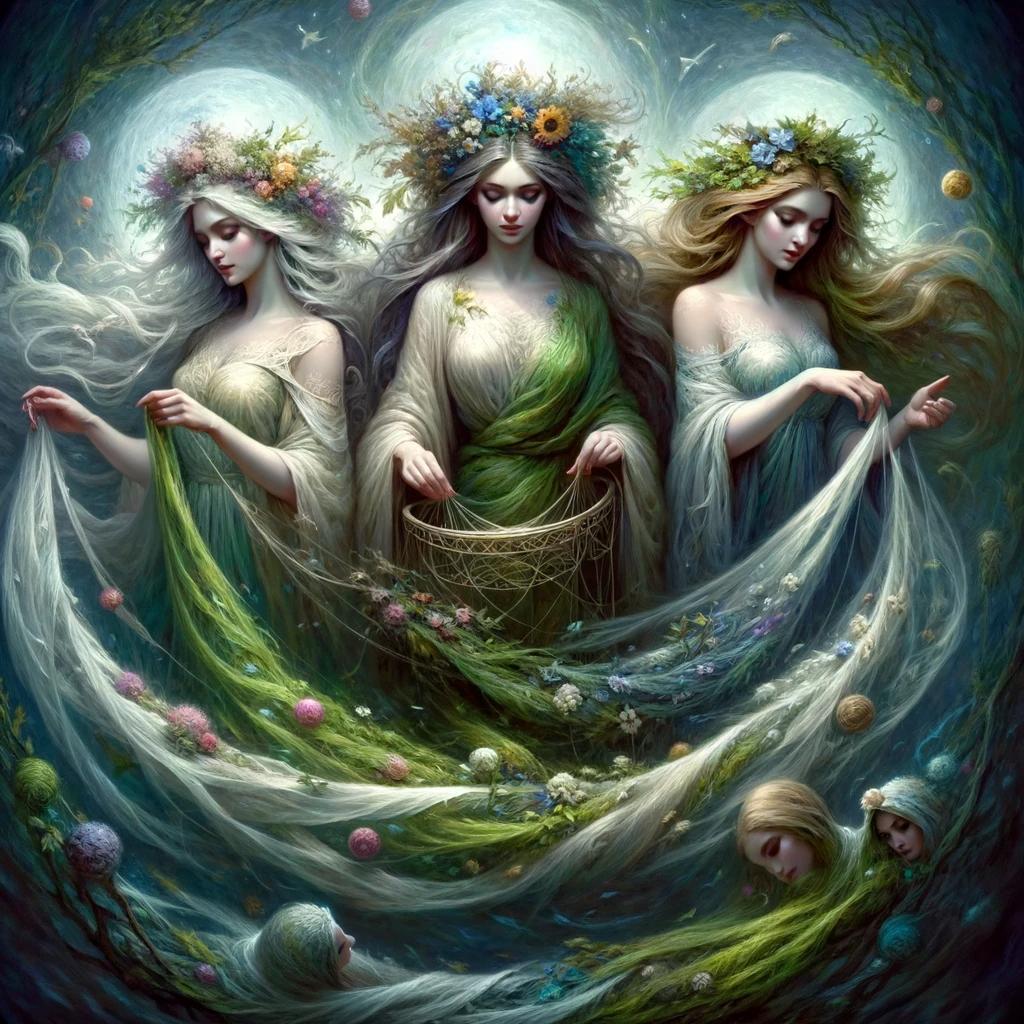
The Rozhanitsy, also known as narecnitsy and sudzhenitsy, were invisible deities or spirits of fate in the pre-Christian religion of the Slavs. Associated with pregnancy, motherhood, marriage, and female ancestors, they were often mentioned alongside the figure of Rod. In some regions, they are believed to be a trio, while in others, there are references to nine, with one considered the ‘queen’.
Once adored as zorze in Poland, these deities were supplanted by revered saints and Mother of God after Christianization.
The Rozhanitsy: Slavic Deities of Fate
The Rozhanitsy hold a significant place in the Slavic mythology, embodying the invisible deities of fate. Exploring their origins and significance allows us to understand their role in shaping the beliefs of the Slavic people.
Their intricate relationship with Rod, the primal god, and other deities adds depth to their narrative.
Origins and Significance
The origins of the Rozhanitsy trace back to the pre-Christian era, where they were revered as powerful entities associated with destiny.
Their significance lies in their connection to crucial aspects of life, such as pregnancy, motherhood, marriage, and the lineage of female ancestors.
Role in Slavic Mythology
Within the expansive Slavic mythological pantheon, the Rozhanitsy personify the unseen forces that shape human destiny.
As ethereal beings, they guide the lives of individuals by influencing their fortunes and predicting their future. Their presence in myths and legends illuminates their importance in the cultural narrative.
Relationship with Rod and Other Deities
The Rozhanitsy share a profound relationship with Rod, often mentioned in conjunction with him.
While they are believed to be three in number, some references suggest the existence of nine Rozhanitsy, with one being considered the ‘queen.’ Their association with other deities further reveals their interconnectedness within the Slavic cosmology.
The Cult of Rozhanitsy in Slavic Native Faith
The Cult of Rozhanitsy plays a significant role in Slavic native faith, encompassing various worship practices, rituals, offerings, sacrifices, festivals, and celebrations.
Worship Practices and Rituals
The worship practices dedicated to the Rozhanitsy were an integral part of Slavic native faith. Followers would gather in sacred spaces, such as groves or temples, to perform rituals aimed at honoring and seeking the favor of these deities.
Rituals included chants, prayers, and offerings.
Offerings and Sacrifices
Offerings were essential in the worship of the Rozhanitsy. Devotees would present symbolic gifts, such as bread, honey, cheese, and grains, as a sign of devotion and gratitude.
Sacrifices, including animals, were sometimes offered to the deities as a more significant gesture of reverence and to seek favor or protection.
Festivals and Celebrations
The worship of the Rozhanitsy was accompanied by various festivals and celebrations throughout the year. These events provided opportunities for the community to come together, honor the deities, and partake in joyous festivities.
A notable festival related to the Rozhanitsy was celebrated on December 26th, though it was later replaced by the Christian Feast of the Mother of God.
In conclusion, the cult of Rozhanitsy within Slavic native faith involved distinct worship practices, rituals, offerings, sacrifices, as well as vibrant festivals and celebrations.
These practices formed an integral part of ancient Slavic religious traditions and served as a means of interaction with and veneration of the Rozhanitsy deities.
Rozhanitsy in Slavic Folklore and Popular Culture
Representations in Folklore and Legends
Rozhanitsy hold a significant place in Slavic folklore and legends.
They are often depicted as beautiful and wise women who possess knowledge of fate and destiny. Folk tales and stories depict their appearances in various forms, such as three women of different ages: a girl, an adult woman, and an elderly lady.
These representations emphasize their connection to the cycles of life and their role in shaping human destinies.
The legends surrounding Rozhanitsy often highlight their interactions with mortal beings, offering blessings or curses depending on how they were treated.
They are known to appear in crucial moments, providing guidance or judging the actions of individuals. Their presence in these stories reinforces their status as deities of fate and guardians of human lives.
Influence in Art, Literature, and Music
The enigmatic nature of Rozhanitsy has fascinated artists, writers, and musicians throughout history. Their mystical aura and association with feminine power have inspired numerous artistic works. Paintings, sculptures, and tapestries often depict the serene beauty and ethereal presence of Rozhanitsy, capturing the essence of their divine nature.
Literature has also been influenced by the folklore and legends surrounding Rozhanitsy. Authors have woven tales of their interactions with mortals, exploring themes of destiny, love, and the consequences of one’s actions.
Poets have found inspiration in their mysterious nature, crafting verses that evoke the powerful, yet gentle, presence of these deities.
The haunting melodies of traditional Slavic music often pay homage to Rozhanitsy.
Songs and chants evoke their mythical presence, immersing listeners in the rich tapestry of Slavic mythology. These musical compositions serve as a connection to the ancient beliefs and stories associated with the Rozhanitsy, ensuring that their legacy endures through generations.
Contemporary Depictions and Adaptations
The influence of Rozhanitsy continues to permeate modern popular culture. Their presence can be found in various forms of media, including books, films, and video games. Contemporary artists and authors draw inspiration from their mythological significance, reimagining them within new narratives and contexts.
Contemporary adaptations of Rozhanitsy often explore themes of female empowerment, embracing their role as symbols of feminine strength and wisdom. These reinterpretations aim to preserve the essence of the ancient deities while resonating with modern audiences who seek to connect with their cultural heritage and explore the mysteries of the past.
The Role of Rozhanitsy in Pregnancy, Motherhood, and Marriage
Protective and Fertility Symbols and Practices
Rozhanitsy played a significant role in safeguarding the well-being of pregnant women and ensuring successful pregnancies. Various protective symbols and practices were associated with their worship. Amulets and talismans, such as small figurines or jewelry depicting Rozhanitsy, were worn by women to invoke their blessings and ward off any potential harm during pregnancy.
Fertility rituals were also performed to seek the favor of Rozhanitsy. These rituals often involved offerings and prayers made to these deities at specific sacred sites or during designated auspicious times.
Symbolic acts, like sowing seeds or pouring water, were performed as a way to invoke the fertility aspects associated with Rozhanitsy.
Blessings and Predictions for Expecting Mothers
Rozhanitsy were believed to have the power to bless expecting mothers with safe deliveries and healthy children. They were invoked to ensure a smooth and successful childbirth. Expecting mothers sought the blessings of these deities through prayers and rituals, often visiting sacred spaces dedicated to Rozhanitsy.
Rozhanitsy were also associated with predicting the destiny of newborns. Three days after a child’s birth, the Rozhanitsy would appear at their crib and foretell their future. Their predictions were believed to guide the child’s path in life.
In some cases, they would leave an indelible mark on the child’s forehead, serving as a visible symbol of their destiny.
Influence on Marital Relationships and Unity
The influence of Rozhanitsy extended beyond pregnancy and childbirth, encompassing the realm of marriage and marital relationships. It was believed that these deities had the power to impact the harmony and success of marriages.
Couples sought the blessings of Rozhanitsy to ensure love, fertility, and unity within their marital bond.
Rozhanitsy were invoked during wedding ceremonies, where prayers and offerings were made to seek their favor.
It was believed that the blessings of these deities could foster a lifelong bond and bring prosperity to the couple. The presence of Rozhanitsy in marriage rituals emphasized the importance of the female ancestral line and the role of women in maintaining the stability of family and community.
- Rozhanitsy played a protective role during pregnancy, with various symbols and practices associated with their worship.
- Expecting mothers sought blessings and predictions from Rozhanitsy for safe deliveries and the future of their children.
- Rozhanitsy influenced marital relationships, with their presence in wedding ceremonies symbolizing unity, fertility, and prosperity.
Rozhanitsy and Female Ancestors in Slavic Culture
The Rozhanitsy hold a significant place in Slavic culture, particularly in their connection to female ancestors.
This section explores their role in ancestral veneration, their portrayal as guardians and guides for women, and their cultural significance and traditions.
Ancestral Veneration and Connection to Lineage
Within Slavic culture, the Rozhanitsy are revered as links to the past and representations of the ancestral lineages. They symbolize the deep connection to one’s roots and the importance of honoring those who came before.
Ancestor veneration rituals and practices play a crucial role in maintaining this connection, allowing individuals to seek guidance and wisdom from their female ancestors.
Roles as Guardians and Guides for Women
As guardians and guides, the Rozhanitsy are believed to offer protection and guidance to women in various aspects of their lives.
Their presence extends beyond the realm of fate and destiny, encompassing aspects of womanhood, such as fertility, childbirth, and marital relationships. Women often turn to the Rozhanitsy for support, seeking their blessings and guidance in navigating life’s challenges.
Cultural Significance and Traditions
The cultural significance of the Rozhanitsy is deeply ingrained in Slavic traditions. Their influence can be observed in various customs, rituals, and folklore. Their association with fertility and motherhood is celebrated through ceremonies and practices that honor women’s roles as bearers of life.
Festivals dedicated to the Rozhanitsy serve as a collective expression of gratitude and reverence for their presence in Slavic culture.
- The Rozhanitsy symbolize the lineage and ancestral connection.
- Ancestor veneration rituals are essential in maintaining this bond.
- The Rozhanitsy serve as protectors and guides for women.
- They offer support in navigating various aspects of womanhood.
- The cultural significance of the Rozhanitsy is observed in traditions.
- They are associated with fertility, childbirth, and marital relationships.
- Festivals dedicated to the Rozhanitsy express gratitude and reverence.
The Transformation of Rozhanitsy after Christianization
The Christianization of the Slavic people brought significant changes to the belief system surrounding the Rozhanitsy.
As native faiths were gradually replaced by Christianity, the worship of these deities was supplanted by the veneration of saints and the Mother of God.
Replacement by Saints and Mother of God
In the process of Christianization, the Rozhanitsy lost their position as revered deities and were replaced by saints and the Mother of God.
The focus shifted towards the worship of female Christian figures who were associated with similar aspects of women’s lives, such as motherhood and protection.
Efforts to Eradicate and Suppress Native Beliefs
Efforts were made to eradicate and suppress native Slavic beliefs, including the worship of the Rozhanitsy.
As Christianity gained influence, the old customs and rituals associated with these deities were actively discouraged and sometimes even banned. Missionaries worked tirelessly to promote the new faith and discourage any practices related to the former pagan beliefs.
Surviving Folklore and Resurgence of Interest
Despite the efforts to eradicate native Slavic beliefs, elements of the worship of the Rozhanitsy managed to survive in folklore and oral traditions. Over time, there has been a resurgence of interest in the pre-Christian Slavic faith and the deities associated with it.
Scholars and enthusiasts have delved into ancient texts and folklore to uncover and revive the knowledge and rituals surrounding the Rozhanitsy, shedding light on their significance in Slavic culture.
The Legacy of Rozhanitsy in Slavic History and Folk Beliefs
Influence on Russian, Polish, and Southern Slavs
The Rozhanitsy had a significant impact on the historical and folk beliefs of various Slavic regions, including Russia, Poland, and Southern Slavs.
Their worship and reverence were deeply ingrained in the cultural fabric of these societies. In Russia, the Rozhanitsy were revered and believed to have control over destiny and the welfare of children.
In Poland, they were worshipped as rozanice and were associated with fertility and protection. Among the Southern Slavs, the belief in the Rozhanitsy played a vital role in childbirth, marriage, and other important life events.
Persistence of Pre-Christian Beliefs and Practices
Despite efforts to eradicate pre-Christian beliefs during Christianization, the traditions and beliefs surrounding the Rozhanitsy managed to persist in Slavic society. The rural communities especially held onto these ancient customs, blending them with Christian practices.
Many folk rituals and celebrations, such as those related to birth and marriage, continue to incorporate elements related to the legacy of the Rozhanitsy. This persistence reflects the deep-rooted connection between Slavic culture and its pre-Christian heritage.
Contemporary Understanding and Rediscovery
In recent years, there has been a renewed interest in the legacy of the Rozhanitsy among scholars, enthusiasts, and practitioners of Slavic native faith. With the revival of indigenous spiritual practices, there has been a concerted effort to reestablish the knowledge and understanding of these ancient deities.
Through research, archaeological discoveries, and the preservation of folklore, contemporary scholars and practitioners are piecing together a more comprehensive understanding of the Rozhanitsy and their significance in Slavic history and folk beliefs.
This ongoing rediscovery is shedding light on a long-neglected aspect of Slavic cultural heritage.











